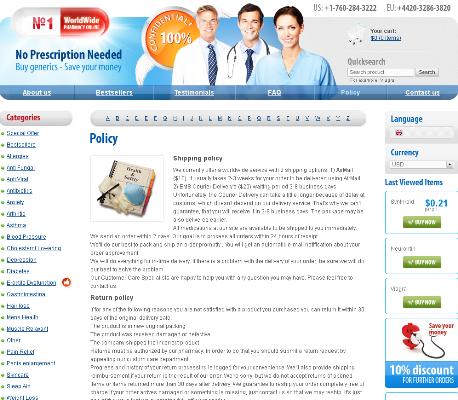Overview of Zantac and Its Common Uses
Zantac, a trade name for ranitidine, has long been a staple in medicine cabinets for its effectiveness in treating conditions like heartburn and peptic ulcers. As an OTC remedy, Zantac serves millions looking for quick relief. Its active ingredient, ranitidine, works by reducing stomach acid production, making it a commonly prescribed solution for various gastrointestinal issues.
Prescribed by many doctors and widely available, Zantac's presence was felt in pharmacies and homes alike. However, the compound’s reputation began to shift when questions arose about its safety. Back then, no one suspected a potential threat lurking within the medication.
Emerging discoveries pointed to NDMA, a harmful contaminant, nestled within Zantac. This brought attention from regulatory bodies, casting a shadow over its once-sterling reputation.
```html
| Benefit | Risk |
|---|---|
| Effective relief for heartburn | NDMA contamination |
| Commonly available OTC | Potential long-term health risks |
| Widely recognized and trusted | Involvement in legal actions |
Historical Context and Fda Warnings on Zantac

Introduced to the market in the early 1980s, Zantac quickly became a popular choice for treating heartburn and acid reflux, thanks to its effectiveness. Originally available by prescription, it soon transitioned to an over-the-counter (OTC) medication. However, the script for Zantac took a dramatic turn in recent years. The U.S. Food and Drug Administration (FDA) issued several warnings, culminating in a full recall in April 2020. These warnings were spurred by discoveries of N-nitrosodimethylamine (NDMA), a probable human carcinogen, in Zantac products. Given NDMA's toxicity even at low levels, the FDA's stance was clear: immediate action was necessary. This regulatory upheaval highlighted the importance of regularly reviewing even established medications for new safety concerns.
Ndma Contamination: the Hidden Danger in Zantac
Zantac, a widely used medication for treating ulcers and acid reflux, was found to contain an unexpected and dangerous compound known as N-Nitrosodimethylamine (NDMA). NDMA is a powerful carcinogen, which can emerge as a side effect during the decomposition process of the drug. This contamination issue first came to light when various batches of Zantac were analyzed, revealing levels of NDMA far exceeding safe limits. Unfortunately, the discovery didn't come soon enough for many users who took the drug for years under the impression it was an effective and safe OTC solution.
Long-term exposure to NDMA poses serious health risks such as liver damage and increased cancer risk. The nature of NDMA's formation within Zantac made it a hidden danger, unseen by both healthcare providers and patients for a long time. With stringent FDA guidelines failing to prevent the contamination, the pharmaceutical world was thrust into Pharmageddon, battling on multiple fronts to ensure patient safety and restore trust. As the situation unfolded, it became evident that simply following the Rx wasn't enough; vigilance in understanding the comp of medications was absolutely crucial.
Long-term Health Risks of Ndma Exposure

NDMA (N-Nitrosodimethylamine) is a known carcinogen linked to various health issues such as liver, kidney, and gastrointestinal cancers. Long-term exposure to NDMA through medications like Zantac is particularly alarming. In clinical studies, individuals exposed to elevated levels of NDMA have demonstrated a statistically significant increase in the risk of developing chronic health conditions, including liver fibrosis and scarring. Considering the frequency with which Zantac was used, especially given its status as an OTC remedy, the potential long-term impact is concerning. Further complicating matters, the FDA only recently implemented strict guidelines for NDMA levels in medications, emphasizing the need for more rigorous sig - directions on a prescription, and thorough consumer awareness to mitigate these risks.
Legal Actions and Recalls Involving Zantac
The journey of Zantac took a dramatic turn in 2019 when the FDA flagged it for containing cancer-causing compounds. This led to multiple legal actions and a sweeping recall. Numerous lawsuits were filed against Zantac’s manufacturers, alleging that they failed to warn the public about the risks. These cases highlighted concerns over the presence of N-nitrosodimethylamine (NDMA), a toxic contaminant, which spurred an immediate response from both the legal and medical communities.
In response to the mounting evidence and public outrage, major retailers pulled Zantac products off their shelves, and the FDA officially requested a market withdrawal. Pharmacy chains—from neighborhood stores to Drive-Thru pharmacies—had to engage in an extensive count and pour process, ensuring that every affected product was promptly removed. Meanwhile, legal proceedings continue to unfold, shedding more light on the implications of prolonged Zantac use. Consumers are now more vigilant, often demanding safer alternatives to these refrigerator drugs.
| Event | Year |
|---|---|
| FDA Warning Issued | 2019 |
| Mass Recall | 2019 |
| Legal Cases Filed | 2019-2023 |
Safer Alternatives and Precautionary Measures
Switching to safer alternatives like on the counter (OTC) medications such as famotidine or cimetidine can help mitigate risks. These options are often readily available and do not carry the same level of concern as Zantac. For more specific needs, consult your white coat to get a script filled for suitable alternatives. It’s crucial to follow the sig diligently and avoid self-medicating. Regular med rec appointments ensure personalized advice, keeping potential side effects in check while safeguarding long-term health.



